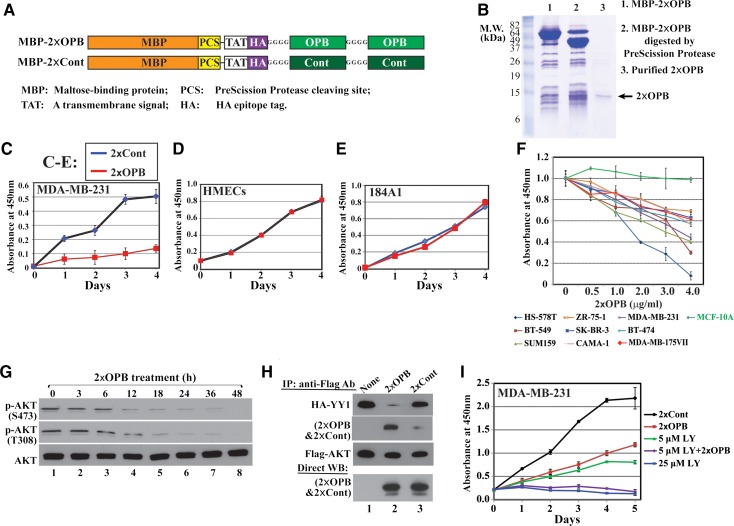Figure 7.
OPB-based peptide inhibits breast cancer cell proliferation and disrupts YY1–AKT interaction. (A) Schematic diagrams of MBP-2×OPB and MBP-2×Cont fusion proteins. The peptides with N-terminal TAT-HA can be released by PreScission Protease (PSP). (B) Coomassie blue staining of SDS-PAGE for 2×OPB before and after PSP digestion and after purification. (C–F) In WST-1 assays, 2×OPB peptide (2 µg/ml) inhibited the proliferation of tumor cells (C), but not nontumorigenic cells (D and E). Cell proliferation data were derived from samples in triplicates for three times. (F) 2×OPB peptide (2 µg/ml) inhibited the proliferation of other breast cancer cell lines, except for nontumorigenic MCF-10A cells. (G) 2×OPB reduced AKT phosphorylation at S473 and T308 in MDA-MB-231 cells. (H) 2×OPB, but not 2×Cont, competed with HA-YY1 in binding to Flag-AKT. (I) In WST-1 assays, co-treatment of 2×OPB (2 µg/ml) and LY294002 (LY, 5 μM) additively inhibited cell proliferation compared with individual treatment. 2×Cont (2 µg/ml) and 25 μM LY294002 were used as negative and positive controls, respectively.

